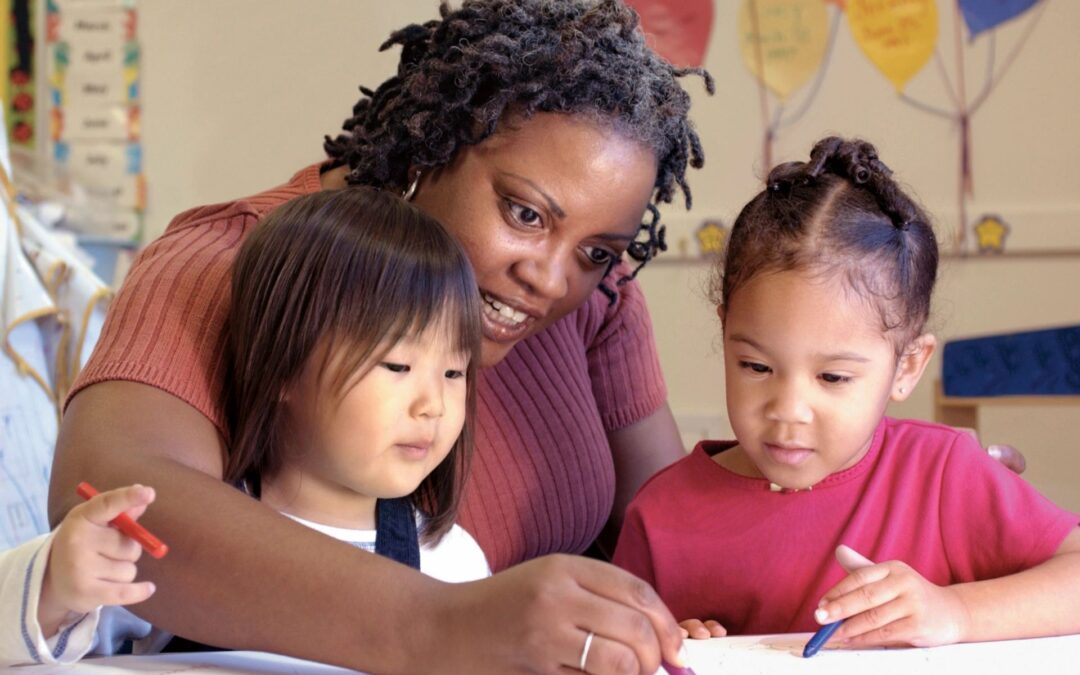I had the opportunity to visit St. John’s Episcopal Preschool in Washington, D.C. St. John’s program is inspired by the philosophy of the preschools in Reggio Emilia, Italy. And inspired it is! When my good friend and colleague, DJ Jensen asked what I liked best about the program, I said “observing the teachers.”
I visit childcare centers and preschools several times a week, with an opportunity to observe teachers, their environments, and their interactions with young children. During my visit to St. John’s was the first time that I truly witnessed what I’ve been describing for all these years. Usually, what I see teachers doing is more of a “lifeguard” style of observing. Teachers scan the room frequently to make sure that everyone is safe. They look around to see where everyone is playing and with whom, but it rarely goes any deeper than that. Teachers capture the surface details of what’s going on, but typically miss the heart of what is happening.
Typically, when I ask teachers to review their observation notes and share one thing they learned, most teachers will tell me that their notes did not reveal anything of value. We tend to train teachers to observe in a clinical sense, removing them from the action and reporting the facts, just the facts. While there is value in that kind of observation for specific purposes, in general, this type of observing does not truly support observing to build relationships with children.
The teachers at St. John’s were actively engaged with the children during their play. They sat at the tables and on the floor and talked with the children. They asked questions, and they waited for responses. They showed a genuine interest in what each child was doing. While they engaged with the children, they took notes on what they saw and heard. They took notes on their conversations. Those notes sometimes made it into a documentation panel, which shows a period of extended exploration and learning. The documentation panels highlighted explorations and discoveries of the group as well as from individual children. Successes and failures were documented, with quotes and questions from both the teachers and children.
One thing I noted from the visit to St. John’s was the amount of TIME the teachers devoted to exploration and discovery. While these classrooms were busy, they lacked the frenetic pacing that so often occurs in many preschool classrooms. There were few transitions, which allowed for much more time for play, and the chance to explore everything in more depth. There was no pressure to “get things done,” as is so often the case in many programs.
When we can take the TIME to slow down and BE with children, we have the opportunity to rediscover the joy of being 2 or 3 or 4. When we slow down and BE with children, we can rediscover the reasons many of us became teachers in the first place. When we slow down to BE with children, we can learn:
- What inspires curiosity and wonder in the child
- What motivates the child and keeps him engaged
- How does the child think and problem solve
- Who is this child as a learner
- What makes this child happy and joyful
This is the kind of observation that every child deserves.


Recent Comments